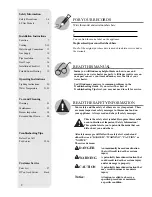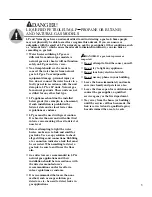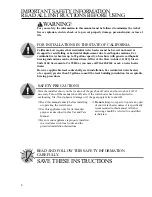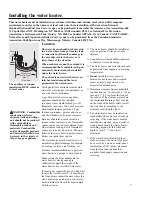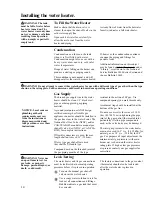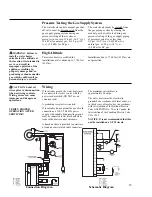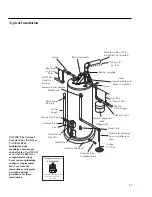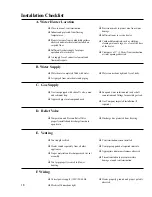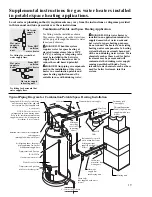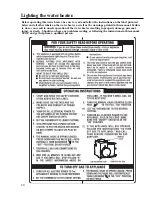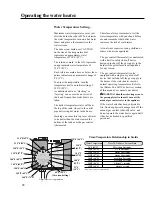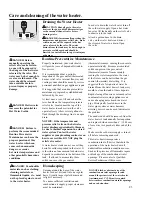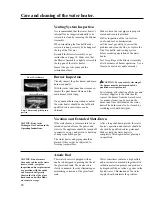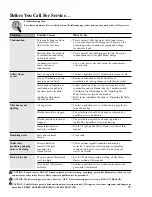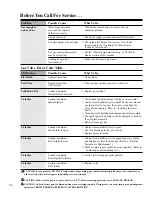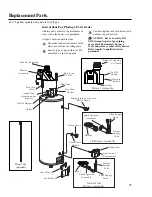
Installing the water heater.
WARNING: Do not attempt to convert this water heater for use with a different type of gas other than the type
shown on the rating plate. Such conversion could result in hazardous operating conditions.
Leak Testing
The water heater and its gas connections
must be leak tested at normal operating
pressures before it is placed in operation.
Turn on the manual gas shut-off
valve near the water heater.
Use a soapy water solution to test for
leaks at all connections and fittings.
Bubbles indicate a gas leak that must
be corrected.
The factory connections to the gas control
(thermostat) should also be leak tested
after the water heater is placed in
operation.
Gas Supply
The branch gas supply line to the water
heater should be clean 1/2” black steel
pipe or other approved gas piping
material.
A ground joint union or ANSI design
certified semi-rigid or flexible gas
appliance connector should be installed in
the gas line close to the water heater. The
National Fuel Gas Code (NFGC) and/or
CAN/CSA B149 mandates a manual gas
shut-off valve: See (NFGC or CAN/CSA
B149) for complete instructions.
If flexible connectors are used, the max.
length shall not exceed 36” (91.4cm).
If lever type gas shut-offs are used,
they shall be T-Handle type.
Compound used on the threaded joints of
the gas piping must be of the type
resistant to the action of LP gas. Use
compound sparingly on male threads only.
A sediment trap should be installed at the
bottom of the gas line.
Do not use excessive force (over 31.5 ft
lbs.) (42.708 N.m) in tightening the pipe
joint at the gas control (thermostat) inlet,
particularly if teflon pipe compound is
used, as the valve body may be damaged.
The inlet gas pressure to the water heater
must not exceed 10.5” w.c. (2.625 kPa) for
natural gas, or 14” w.c. (3.5 kPa) for LP
gas. For purposes of input adjustment, the
minimum inlet gas pressure (with main
burner on) is shown on the water heater
rating plate. If high or low gas pressures
are present, contact your gas supplier for
correction.
WARNING: Never use
an open flame to test for
gas leaks, as property
damage, personal injury, or
death could result.
14
Condensation
Condensation can form on the tank
when it is first filled with water.
Condensation might also occur with a
heavy water draw and very cold inlet
water temperatures.
Drops of water falling on the burner can
produce a sizzling or pinging sound.
This condition is not unusual, and will
disappear after the water becomes heated.
If, however, the condensation continues,
examine the piping and fittings for
possible leaks.
Additional information on this subject
may be found at
www.rheem.com
, under
“Library”, scroll down to the Technical
Service Bulletins 1400 Series Section and
choose Bulletin #1402.
To Fill the Water Heater
Make certain that the drain valve is
closed, then open the shut-off valve in the
cold water supply line.
Open each hot water faucet slowly to
allow the air to vent from the water
heater and piping.
A steady flow of water from the hot water
faucet(s) indicates a full water heater.
WARNING: The tank
must be full of water before
heater is turned on. The
water heater warranty does
not cover damage or failure
resulting from operation
with an empty or partially
empty tank.
NOTICE- Local codes or
plumbing authority
requirements may vary
from the instuctions or
diagrams provided and
take precedence over these
instructions.


